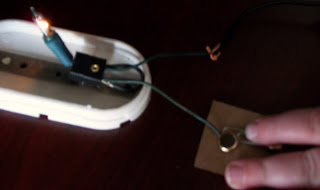Here's how it works: While you're chewing or drinking, the food or drink releases chemicals that immediately travel up into your nose. These chemicals trigger the olfactory receptors inside the nose. They work together with your taste buds to create the true flavor of item by telling the brain all about it.
Hypothesis
As the temperature of sweetened water is increased, our ability to distinguish between a sweeter and a less sweet liquid is improved.
Overview : Sense of taste
 Taste enables us to appreciate the flavors in our food. It is this ability that helps us discern the different flavors in our food and heightens our enjoyment of the food. The 4 basic types of taste are sweet, sour, salty and bitter. We are able to perceive taste with our tongues due to the specific areas of our tongue which are sensitive to that taste. The taste buds in these specific zones help up taste our food. When food comes into contact with our taste buds, an electric signal is generated in our tongue. This electric signal is then sent to the brain through our nerves and we immediately recognize the taste.
Taste enables us to appreciate the flavors in our food. It is this ability that helps us discern the different flavors in our food and heightens our enjoyment of the food. The 4 basic types of taste are sweet, sour, salty and bitter. We are able to perceive taste with our tongues due to the specific areas of our tongue which are sensitive to that taste. The taste buds in these specific zones help up taste our food. When food comes into contact with our taste buds, an electric signal is generated in our tongue. This electric signal is then sent to the brain through our nerves and we immediately recognize the taste.Scientific terms
Taste bud=contain the receptors for taste. They are located around the small structures on the upper surface of the tongue, soft palate, upper esophagus and epiglottis. These structures are involved in detecting the five (known) elements of taste perception: salty, sour, bitter, sweet, and savory
Senses= are the physiological methods of perception.
Nerves=is an enclosed, cable-like bundle of peripheral axons (the long, slender projections of neurons). A nerve provides a common pathway for the electrochemical nerve impulses that are transmitted along each of the axons.
Materials

6 jugs labeled A, B, C, D, E and F
240 plastic spoons for tasting
40 plastic cups
1 wooden spatula to mix sugar and water
1 packet of sugar
6 liters of cold drinking water
Thermometer
Oven
Refrigerator
Spoon to mix the sugar
Small weighing machine to measure 20g to 100g weight.
Jug A 10 grams 1 liter
Jug B 20 grams 1 liter
Jug C 50 grams 1 liter
Jug D 60 grams 1 liter
Jug E 90 grams 1 liter
Jug F 100 grams 1 liter
3. After tasting the sample, they are to spit out the contents into a plastic cup.
4. Fill in the first column, ticking the 3 jugs that tasted sweeter when compared to the other sample. (e.g. Jug A is sweeter than Jug B. Therefore, tick A at 10 degrees Celsius)
5.The procedure above is repeated by bringing the temperature of the sweetened water to 20 0C (almost room temperature), 30 0C and 40 0C. (An oven maybe used to raise the temperature of the water.)
6. The participants are given a form to fill out the result of their tasting experiment. Calculate the number of ticks for each comparison and find the percentage that chose B over A, D over C and F over E.










.JPG)
 Third:
Third:






















